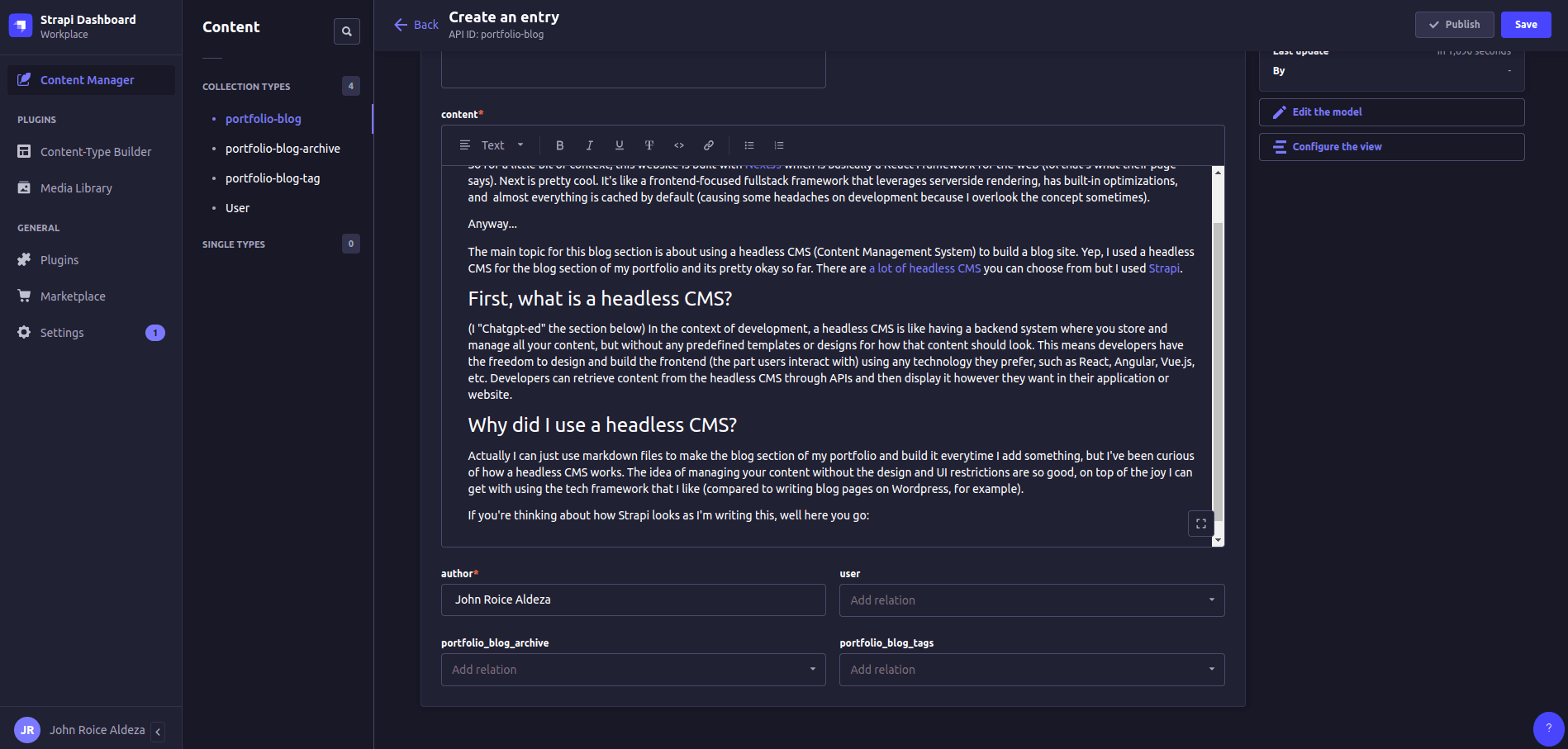Why I use a headless CMS for my blog site
John Roice Aldeza
Published on March 05, 2024
Hi! This I think this is the first content I uploaded in the blog section of my personal portfolio.
So for a little bit of context, this website is built with NextJs which is basically a React Framework for the web (lol that's what their page says). Next is pretty cool. It's like a frontend-focused fullstack framework that leverages serverside rendering, has built-in optimizations, and almost everything is cached by default (causing some headaches on development because I overlook the concept sometimes).
Anyway...
The main topic for this blog section is about using a headless CMS (Content Management System) to build a blog site. Yep, I used a headless CMS for the blog section of my portfolio and its pretty okay so far. There are a lot of headless CMS you can choose from but I used Strapi.
First, what is a headless CMS?
(I "Chatgpt-ed" this paragraph) In the context of development, a headless CMS is like having a backend system where you store and manage all your content, but without any predefined templates or designs for how that content should look. This means developers have the freedom to design and build the frontend (the part users interact with) using any technology they prefer, such as React, Angular, Vue.js, etc. Developers can retrieve content from the headless CMS through APIs and then display it however they want in their application or website.
Why did I use a headless CMS?
Actually I can just use markdown files to make the blog section of my portfolio and build it everytime I add something, but I've been curious of how a headless CMS works. The idea of managing your content without the design and UI restrictions are so good, on top of the joy I can get with using the tech framework that I like (compared to writing blog pages on Wordpress, for example).
If you're thinking about how Strapi looks as I'm writing this, well here you go:

Pretty cool right? I just put content here, and then my frontend site (this portfolio) would make a request to the server where I hosted Strapi and then BOOM! Now you can read this article on my website.
Conclusion
By the way, I deployed my Strapi instance on Railway. Since I'm on the platform for quite some time, I've been given free $5 credit every month so I can use some resources there. If you have the $$$, you can definitely host Strapi on Strapi Cloud, but you can also choose other deployment options if you can bear reading the docs (and spending quite some time and brainpower to do so).
Keep learning!